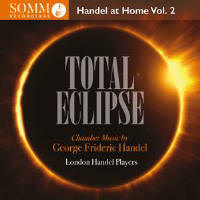Texte paru dans: / Appeared in: |
|
|
Outil de traduction |
|
|
it’s not hard to picture eight musically accomplished Hanoverian-era friends gathering in some high-ceilinged townhouse to recreate the Handel music they’ve most enjoyed at the theatre.
Such musicians had plenty of chamber arrangements to choose from, too. Savvy London publisher John Walsh was lightning-quick at bringing out his own amateur-friendly chamber versions of whatever London’s opera audiences were newly humming on the streets. Harpsichordists meanwhile had William Babell’s 1717 set of Handel aria arrangements, Suits of the Most Celebrated Lessons. Handel himself also produced a number of more skilfully crafted options.
Back to the London Handel Players, and their programme is a mix of 18th-century and self-penned settings. One successful amalgamation is harpsichordist Silas Wollston’s version of the much-loved ‘Lascia ch’io pianga’, which begins as a direct transcription of Handel’s original before gradually incorporating Babell’s harmonic liberties and ornamental flash. For Samson, they’ve turned initially to John Walsh’s unlikely but surprisingly satisfying arrangement for solo flute and continuo, its Overture still sounding suitably theatrical thanks to flautist Rachel Brown’s punchy sforzandos. Then for the two arias, the original strings have been reinstated, allowing ‘Total eclipse’ to retain its original unison-strings bleakness, and ‘Thus when the sun’ to follow on with show-stopping sudden bright radiance. Other joys? The utter closeness of the duetting between Brown and violinist Adrian Butterfield in Giulio Cesare’s ‘Se pietà’; the brightly fluid, rich-toned rhythmic buoyancy in the outer movements of the Corelli-breathed Sonata a 5, the closest Handel got to a violin concerto; and the emotively vocal quality that Wollston’s slight whisper of rubato has reinjected into the circling lines of Handel’s own harpsichord arrangement of ‘Ombra cara’. All in all, an end-to-end pleasure.
|
|




